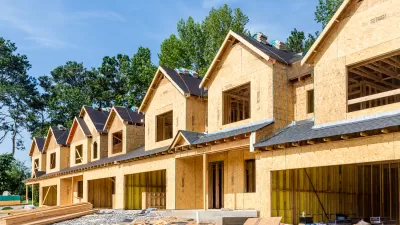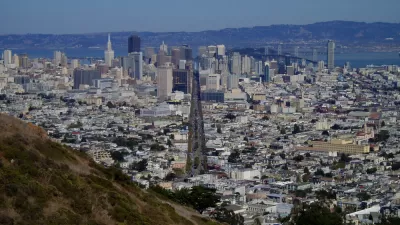Robin Pogrebin sheds light on a thorny conflict between a high-rise condo in Dallas, Texas and the museum it named itself after.
Built in 2003, the Nasher Sculpture Center played an important role in the recent renaissance of Downtown Dallas – a revitalization that now comes at its own peril.
"The center, designed by Renzo Piano and Peter Walker, was considered so appealing that a 42-story condominium called Museum Tower sprouted across the street," Pogrebin writes. "But the glass skin of the condo tower, still under construction, now reflects so much light that it is threatening artworks in the galleries, burning the plants in the center's garden and blinding visitors with its glare."
"The museum was forced to install light-blocking panels inside the roof for a recent exhibition of works by Elliott Hundley because the reflections from the tower exceeded the acceptable light levels for the art," explains Pogrebin. It also had to take down an oil painting by Picasso, and dismantle a contemporary installation "because its roof aperture was meant to reveal open sky, not a skyscraper."
Scott Johnson, the Los Angeles-based architect of Museum Tower, insists on a bilateral resolution: "My responsibility is to fully vet solutions vis-à-vis Museum Tower - that's my building. But I can't say sitting here now that the Nasher may not need to do something on their end."
Piano was quick to rebut: "What do you do - put a roof on the garden? You destroy everything," he said. "They must solve the problem because they created the problem."
FULL STORY: Dallas Museum Simmers in a Neighbor’s Glare

Pennsylvania Mall Conversion Bill Passes House
If passed, the bill would promote the adaptive reuse of defunct commercial buildings.

Planning for Accessibility: Proximity is More Important than Mobility
Accessibility-based planning minimizes the distance that people must travel to reach desired services and activities. Measured this way, increased density can provide more total benefits than increased speeds.

Fair Housing Cannot Take a Back Seat to ‘Build, Baby, Build’
If we overlook fair housing principles in the plan to build US housing back better, we risk ending up right back where we started.

LA Metro Board Approves New 710 Freeway Plan
The newest plan for the 710 corridor claims it will not displace any residents.

Austin’s Proposed EV Charging Rules Regulate Station Locations, Size
City planners say the new rules would ensure an efficient distribution of charging infrastructure across the city and prevent an overconcentration in residential areas.

Making California State Parks More Climate-Resilient
A recently released report offers recommendations for keeping state parks healthy and robust, including acquiring additional land for conservation and recreation.
City of Costa Mesa
Licking County
Barrett Planning Group LLC
HUD's Office of Policy Development and Research
Mpact Transit + Community
HUD's Office of Policy Development and Research
Tufts University, Department of Urban and Environmental Policy & Planning
City of Universal City TX
ULI Northwest Arkansas
Urban Design for Planners 1: Software Tools
This six-course series explores essential urban design concepts using open source software and equips planners with the tools they need to participate fully in the urban design process.
Planning for Universal Design
Learn the tools for implementing Universal Design in planning regulations.

























